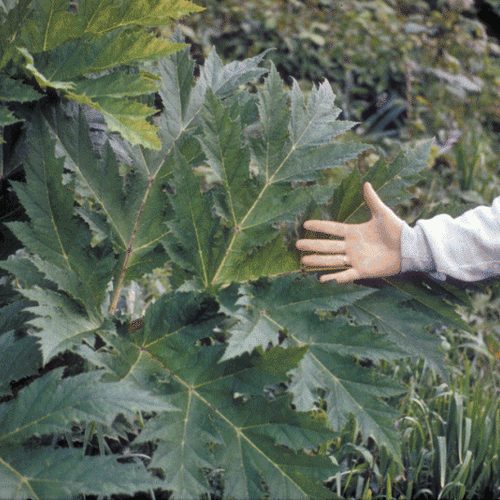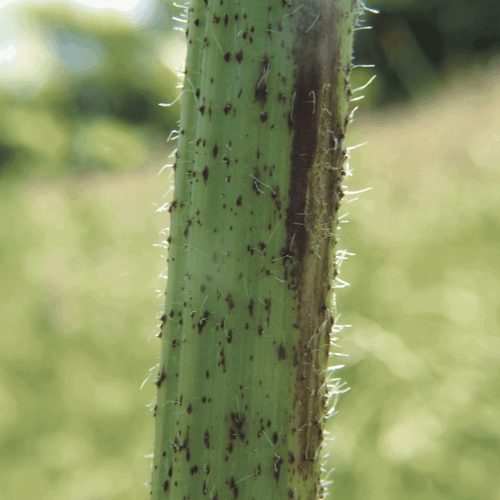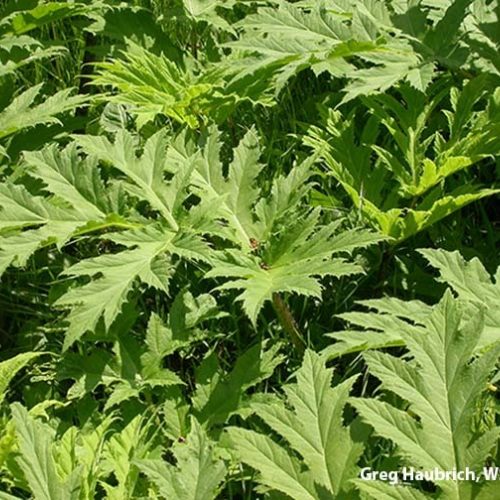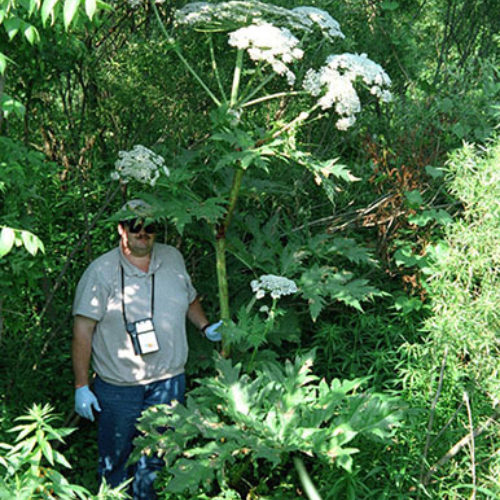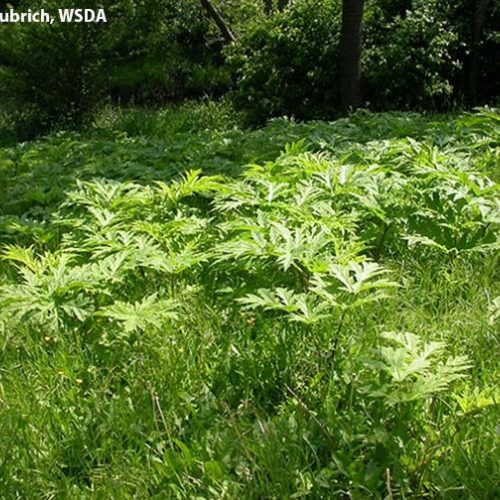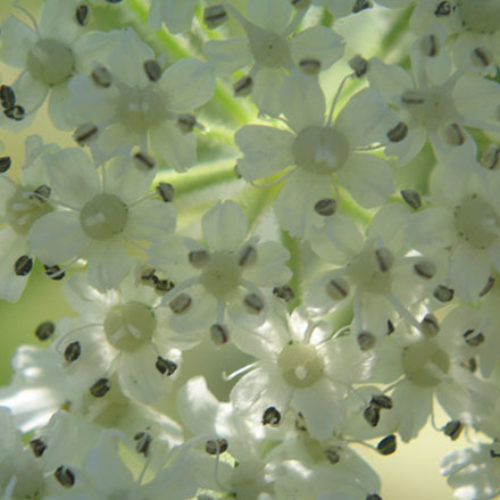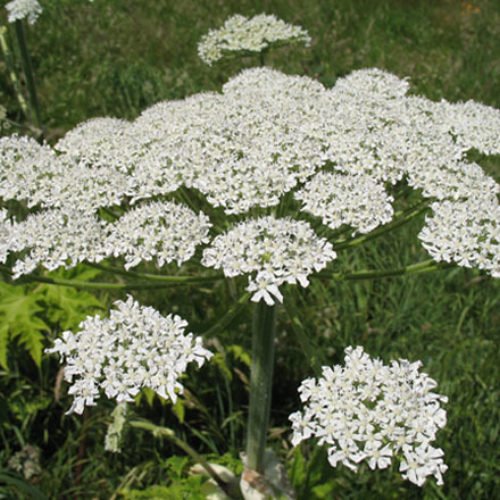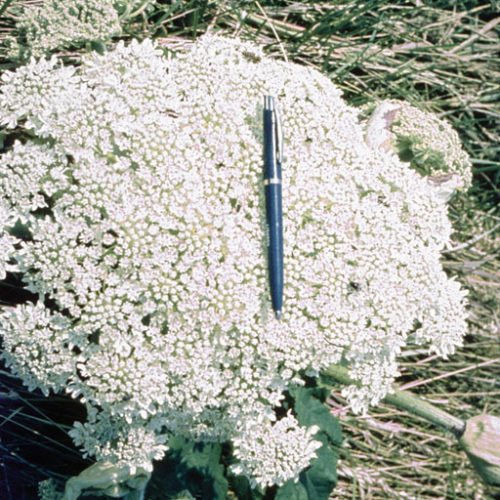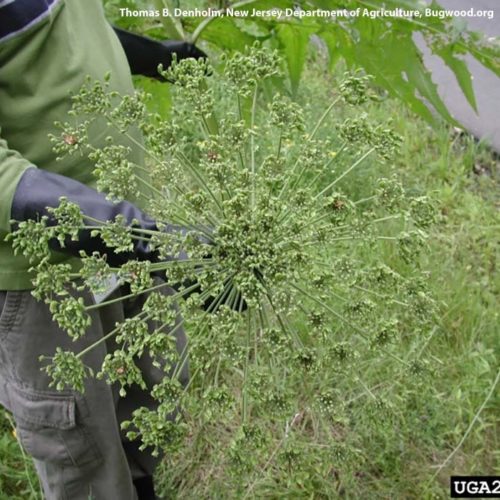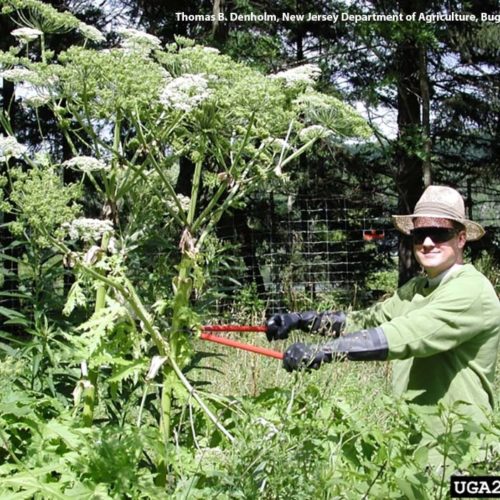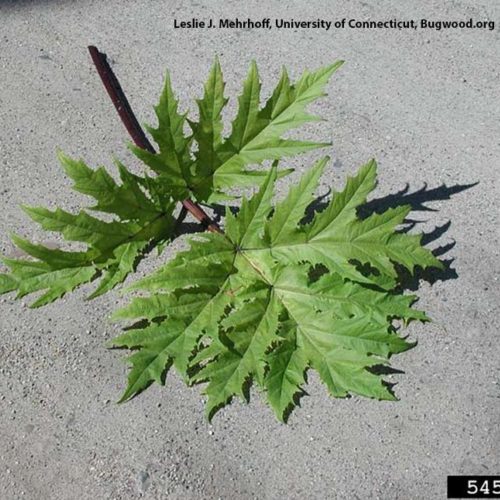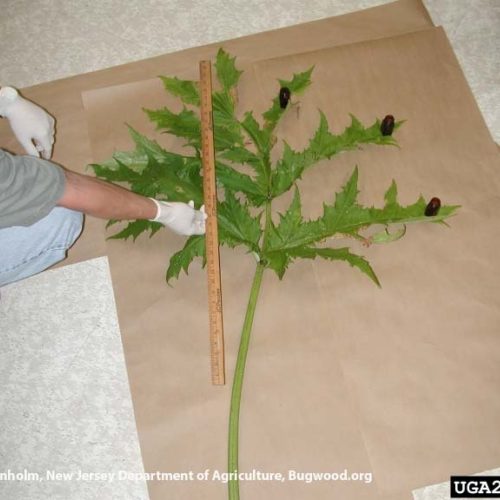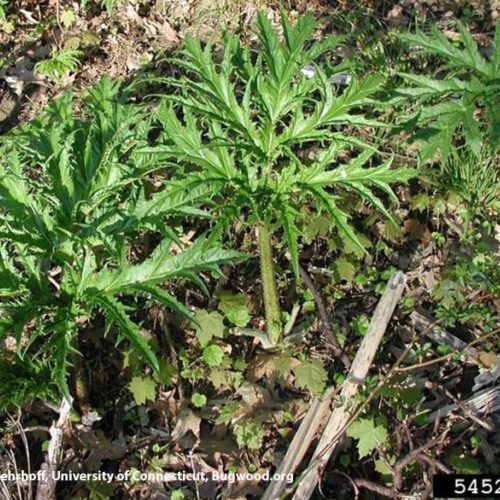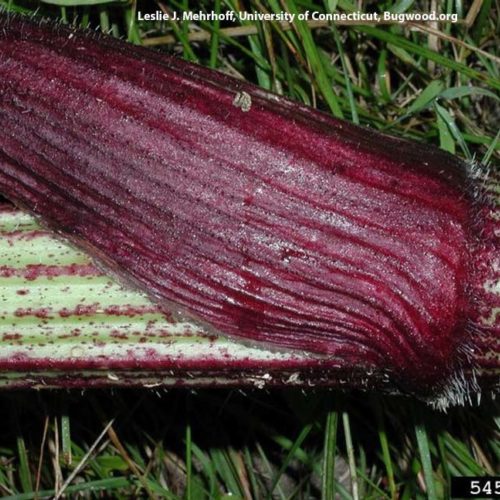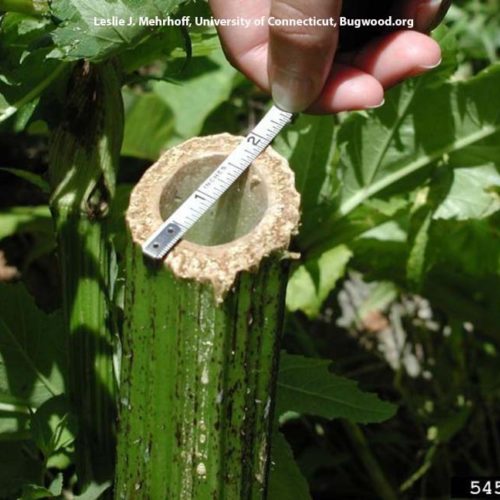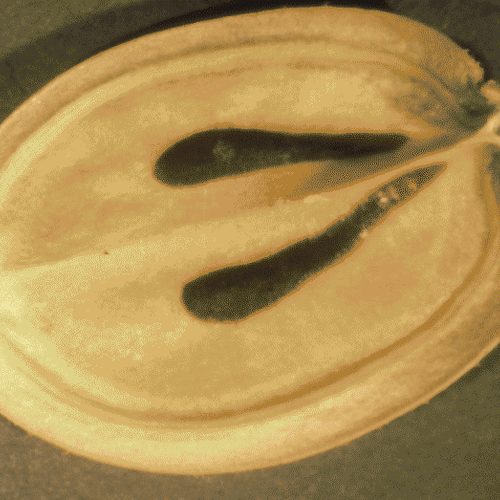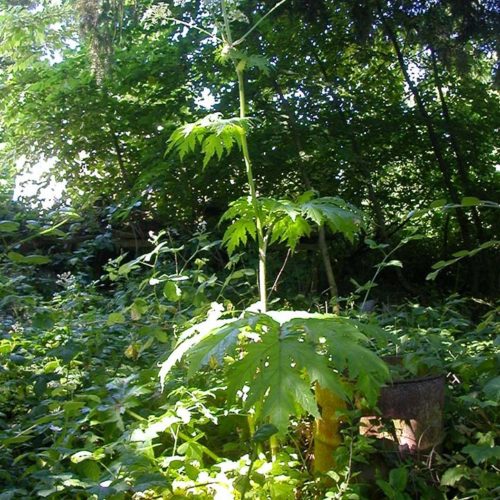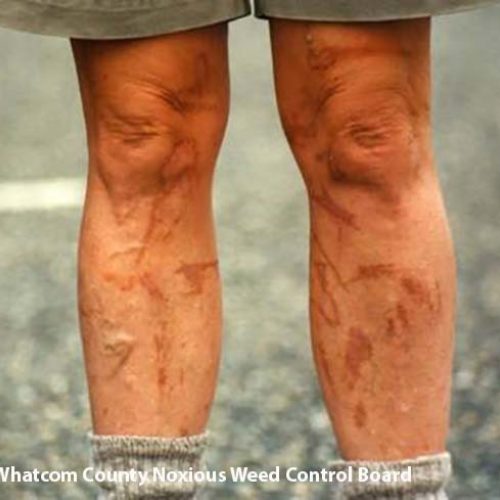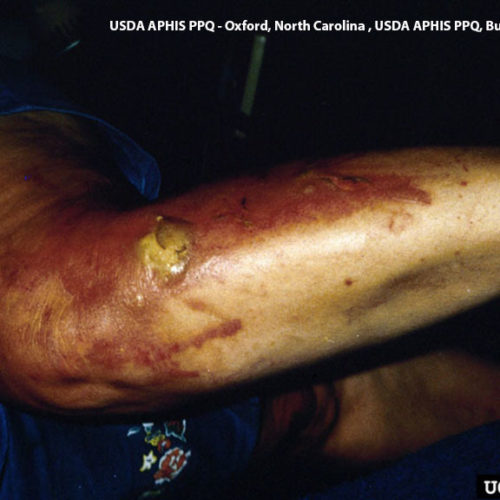Giant Hogweed
Heracleum mantegazzianum
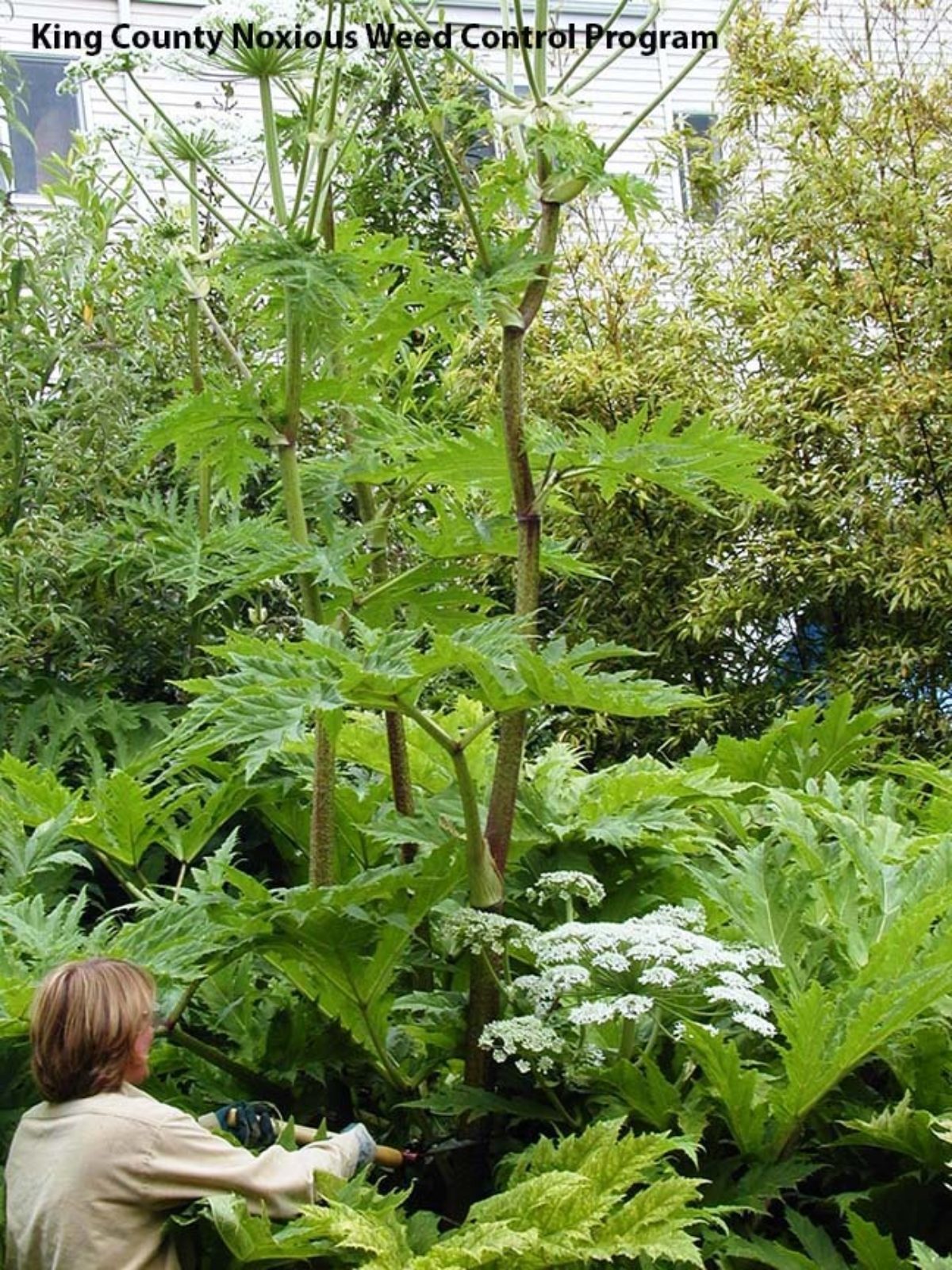
Family: Apiaceae
Other Common Names: giant cow parsley
Weed class: A
Year Listed: 1991
Native to: The Caucasus mountains and southwestern Asia
Is this Weed Toxic?:
humans and some animals
Legal listings:
This plant is also on the Washington State quarantine list. It is prohibited to transport, buy, sell, offer for sale, or distribute plants or plant parts of quarantined species into or within the state of Washington or to sell, offer for sale, or distribute seed packets of seed, flower seed blends, or wildflower mixes of quarantined species into or within the state of Washington. Please see WAC 16-752 for more information on the quarantine list. For questions about the quarantine list, contact the Washington State Department of Agriculture's Plant Services Program at (360) 902-1874 or email PlantServices@agr.wa.gov.
Why Is It a Noxious Weed?
It forms dense canopies outcompeting native species and increasing soil erosion. It is a public safety hazard as it exudes a clear watery sap which sensitizes the skin to ultraviolet radiation, resulting in severe burns to the affected area causing blistering and painful dermatitis. Scars can last for as long as 6 year and sensitivity to sunlight can continue beyond that.
How would I identify it?
General Description
Giant hogweed is a perennial (sometimes biennial) distinguished by its large size, capable of growing to a height of 15-20 feet tall. It has stout dark reddish-purple spotted/splotched stems and leaf stalks. Stalks and stem produce sturdy purplish, pustulate bristles.
Flower Description
Giant hogweed has broad, flat-topped flower clusters (umbels) of many small white flowers. Each flower cluster may grow to a diameter of 2.5 feet.
Leaf description
The compound leaves of giant hogweed may grow as large as five feet wide. Each leaflet is deeply cut/lobed with leaf edges being sharply toothed (incised).
Stem description
The stem and stalks are hollow and vary 2 to 4 inches in diameter. Stems have distinctive purplish-red, bumpy blotches with stiff hairs.
Fruit Seed Description
The flowers produce large elliptic dry seeds marked with brown swollen resin canals.
May Be Confused With
Cow Parsnip, Heracleum maximum, is a related native plant in Washington, in the same plant family, that is similar in appearance and may be mistaken for giant hogweed.
- Cow parsnip is shorter, typically growing 5 to 8 feet tall.
- Cow parsnip has hairy grooved stems, and the leaves are not as deeply lobed and sharply cut/toothed (incised) on the edges as seen with giant hogweed.
- Cow parsnip’s umbel flower clusters are up to 1 foot across, while giant hogweed's umbels can be up to 2.5 feet wide.
- Giant hogweed is almost exclusively found in western Washington, while cow parsnip can be found growing throughout the state.
- Caution should still be used around cow parsnip as it too can cause skin irritation and blistering if its watery sap gets on bare skin, but it is not as severe as giant hogweed.
Click here and here and here to see some helpful comparisons. Your county noxious weed coordinator can also help with identification.
Where does it grow?
Giant hogweed may colonize a wide variety of habitats but is most common along roadsides, other rights-of-way, vacant lots, streams and rivers. Please click here to see a county level distribution map of giant hogweed in Washington.
How Does it Reproduce?
Reproduction is by seed and perennating buds formed on the root crown and tuberous root stalk. Seed production is variable, with estimates ranging from 1,500 to 100,000 per plant. Seeds may remain viable in the soil for 7+ years. Abundant seed production, a persistent root stalk, and reproduction from perennating buds are cited as reasons for its capability to colonize rapidly.
How Do I Control It?
General Control Strategy
The key strategy for this plant is to get rid of it before it sets seed. When controlling giant hogweed, make sure to wear gloves and protective clothing to avoid contact with its toxic sap.
Mechanical Control
It’s possible to hand-pull or dig up seedlings and young plants, but it is important to avoid getting any of the sap on your skin. The toxic sap that causes the burning is contained in all portions of the plant. Always wear protective clothing and gloves. Large plants can be cut back, using loppers to avoid contact, and then dug up. Make sure to remove the root crown and as much of the roots as possible to prevent re-sprouting. Be sure to bag the flowerheads and plant parts and put into the regular trash to prevent seed spread. Check with your county noxious weed control board to see if vouchers are available to pay for disposal of this noxious weed. Mowing plants serves only to stimulate budding on the main root stalk, but it might be successful if done consistently and persistently enough to starve the rootstalk and may be effective for large infestations.
Biological Control
There are no classic biological control agents approved for giant hogweed. Cattle and pigs are cited as possible grazers of this plant. Both eat giant hogweed without apparent harm though there could be some risk of dermatitis. Check with your county noxious weed board before attempting this control method as other methods are available for small infestations.
Herbicide Control
Please refer to the PNW Weed Management Handbook, and contact your county noxious weed coordinator for specific recommendations.
For More Information
See our brochure on giant hogweed.
See our postcard for early detection information about giant hogweed.
Giant hogweed information from the book: Weed Control in Natural Areas in the Western United States
Thurston County NWCB Fact Sheet on giant hogweed
Clallam County NWCB Fact Sheet on giant hogweed
Jefferson County NWCB Fact Sheet on giant hogweed
Mason County NWCB Fact Sheet on giant hogweed
Pierce County NWCB Fact Sheet on giant hogweed
Clark County NWCB Fact Sheet on giant hogweed
Whatcom County NWCB Fact Sheet on giant hogweed
King County NWCB Fact Sheet on giant hogweed
King County NWCB Fact Sheet on giant hogweed in Spanish
Control Options for giant hogweed from King County NWCB
Control Options for giant hogweed from Whatcom County NWCB
See our Written Findings for more information about giant hogweed (Heracleum mantegazzianum)



